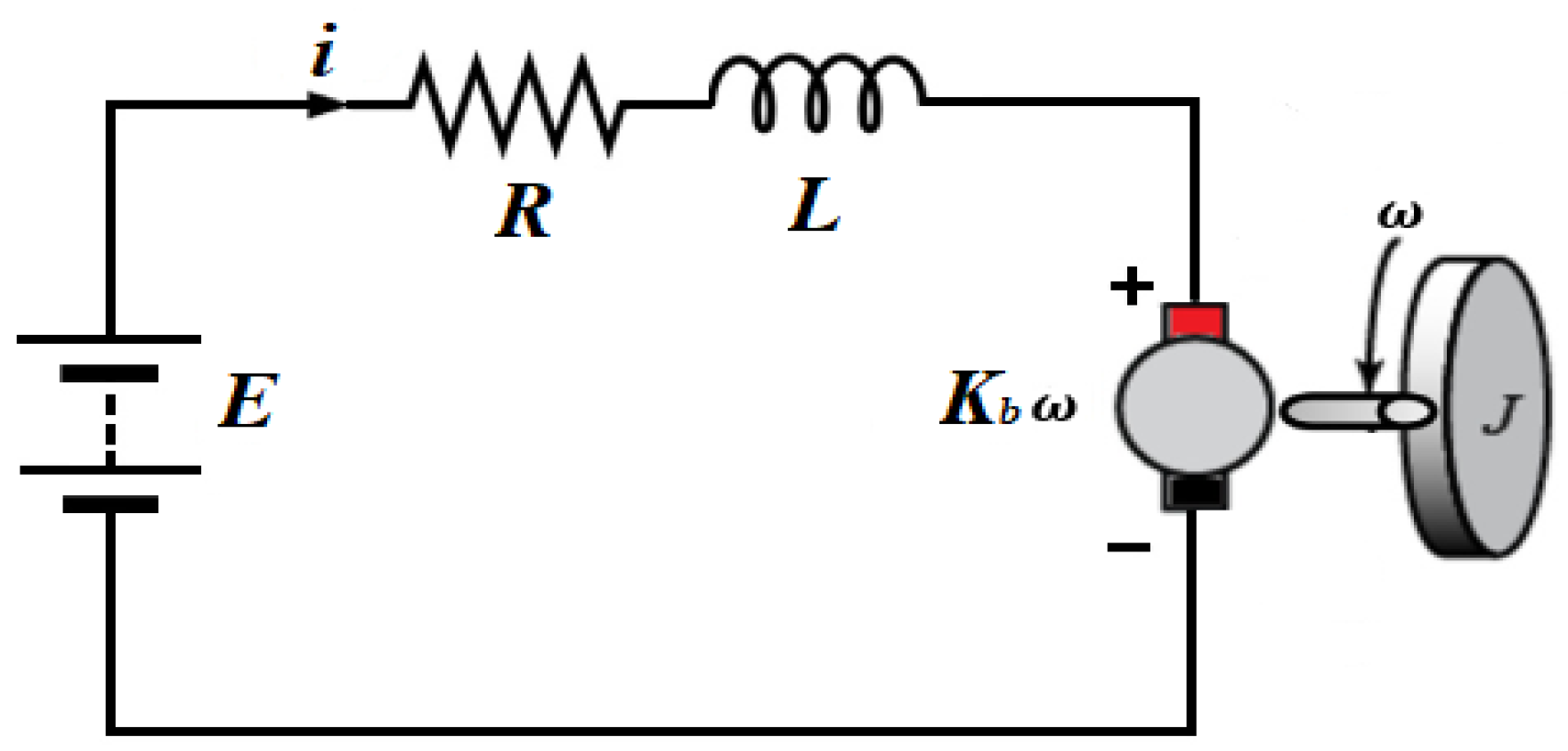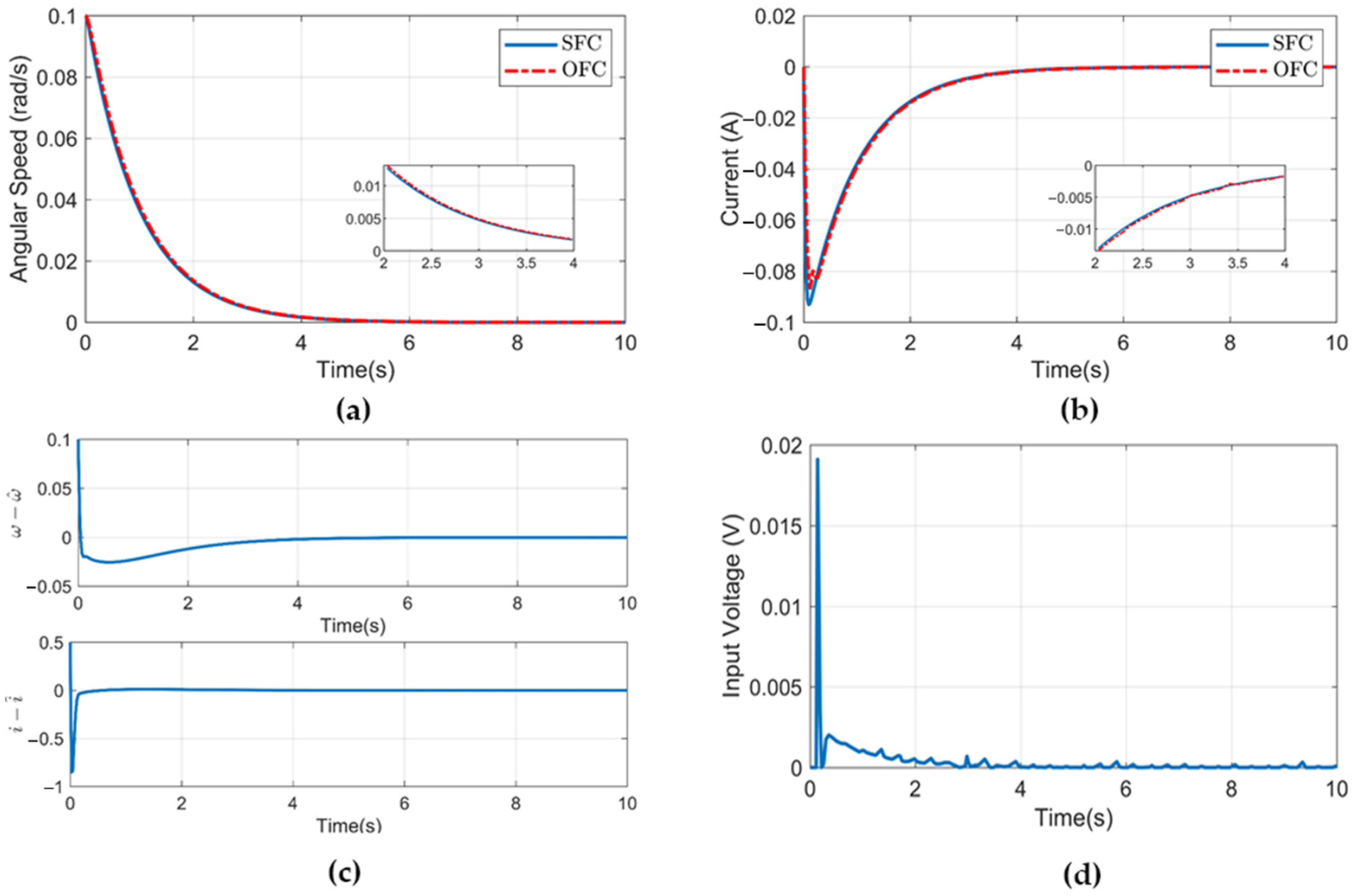Output Feedback Control of Two-Time-Scale Permanent-Magnet DC Motor Using High-Gain Observers †
Abstract
:1. Introduction
2. Output Feedback Control Design
3. Simulation Results
4. Conclusions
Author Contributions
Funding
Institutional Review Board Statement
Informed Consent Statement
Data Availability Statement
Conflicts of Interest
References
- Kokotović, P.; Khalil, H.K.; O’reilly, J. Singular Perturbation Methods in Control: Analysis and Design; SIAM: New York, NY, USA, 1999. [Google Scholar]
- Raza, A.; Malik, F.M.; Mazhar, N.; Khan, R. Two-time-scale robust output feedback control for aircraft longitudinal dynamics via sliding mode control and high-gain observer. Alex. Eng. J. 2022, 61, 4573–4583. [Google Scholar] [CrossRef]
- Khalil, H.K. Nonlinear Systems, 3rd ed.; Prentice Hall: Englewood Cliffs, NJ, USA, 2002. [Google Scholar]
- Khalil, H.K. High-Gain Observers in Nonlinear Feedback Control; SIAM: Philadelphia, PA, USA, 2017. [Google Scholar]


Disclaimer/Publisher’s Note: The statements, opinions and data contained in all publications are solely those of the individual author(s) and contributor(s) and not of MDPI and/or the editor(s). MDPI and/or the editor(s) disclaim responsibility for any injury to people or property resulting from any ideas, methods, instructions or products referred to in the content. |
© 2023 by the authors. Licensee MDPI, Basel, Switzerland. This article is an open access article distributed under the terms and conditions of the Creative Commons Attribution (CC BY) license (https://creativecommons.org/licenses/by/4.0/).
Share and Cite
Raza, A.; Mazhar, N.; Malik, F.M.; Khan, R.; Khan, A.; Ullah, H. Output Feedback Control of Two-Time-Scale Permanent-Magnet DC Motor Using High-Gain Observers. Eng. Proc. 2023, 45, 20. https://doi.org/10.3390/engproc2023045020
Raza A, Mazhar N, Malik FM, Khan R, Khan A, Ullah H. Output Feedback Control of Two-Time-Scale Permanent-Magnet DC Motor Using High-Gain Observers. Engineering Proceedings. 2023; 45(1):20. https://doi.org/10.3390/engproc2023045020
Chicago/Turabian StyleRaza, Abid, Naveed Mazhar, Fahad Mumtaz Malik, Rameez Khan, Arslan Khan, and Hameed Ullah. 2023. "Output Feedback Control of Two-Time-Scale Permanent-Magnet DC Motor Using High-Gain Observers" Engineering Proceedings 45, no. 1: 20. https://doi.org/10.3390/engproc2023045020
APA StyleRaza, A., Mazhar, N., Malik, F. M., Khan, R., Khan, A., & Ullah, H. (2023). Output Feedback Control of Two-Time-Scale Permanent-Magnet DC Motor Using High-Gain Observers. Engineering Proceedings, 45(1), 20. https://doi.org/10.3390/engproc2023045020









